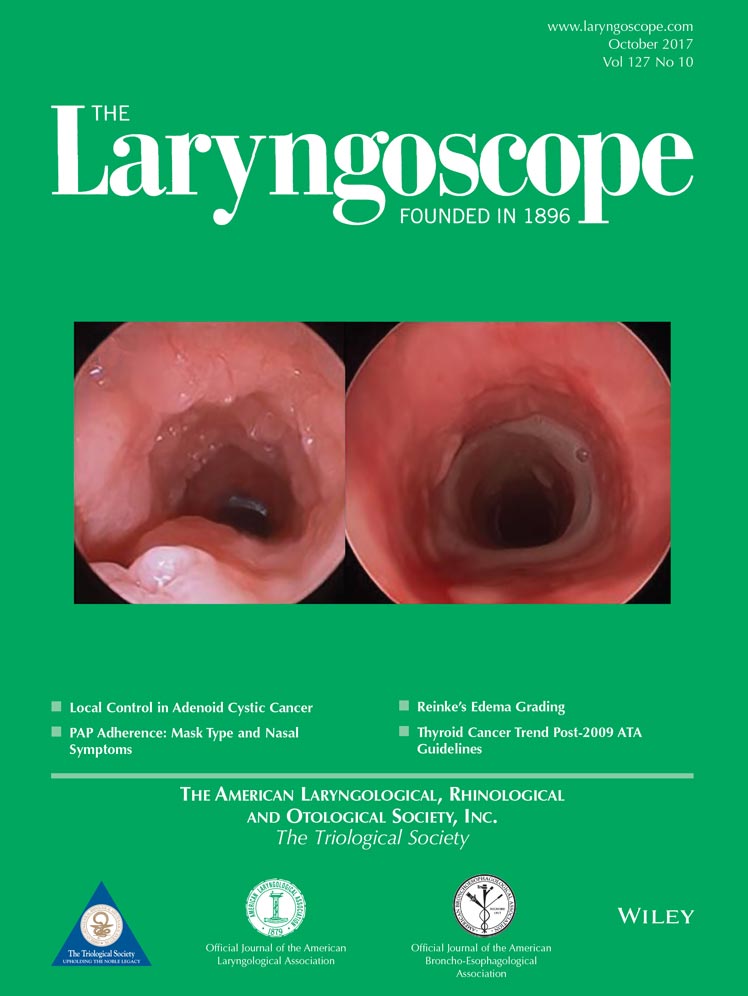Insertion depth impacts speech perception and hearing preservation for lateral wall electrodes
This paper has been submitted for consideration for oral presentation at the Triological Society Combined Sections Meeting in New Orleans, Louisiana, 2017.
The project was supported by grants R01DC008408, R01DC014462, and R01DC014037 from the National Institute on Deafness and Other Communication Disorders and UL1TR000445 from the National Center for Advancing Translational Sciences. The content is solely the responsibility of the authors and does not represent the official views of these institutes. Dr. Wanna is a consultant for Med-El, Advanced Bionics, Oticon Medical, and Cochlear Americas. Dr. Haynes is a consultant for Cochlear, Advanced Bionics, Grace Medical, MedEl, Stryker, and Synthes. The authors have no other funding, financial relationships, or conflicts of interest to disclose.
This study was approved by the Vanderbilt Institutional Review Board (090155).
Abstract
Objectives
1) Examine angular insertion depths (AID) and scalar location of Med-El (GmbH Innsbruck, Austria) electrodes; and 2) determine the relationship between AID and audiologic outcomes controlling for scalar position.
Study Design
Retrospective review.
Methods
Postlingually deafened adults undergoing cochlear implantation with Flex 24, Flex 28, and Standard electrode arrays (Med-El) were identified. Patients with preoperative and postoperative computed tomography scans were included so that electrode location and AID could be determined. Outcome measures were 1) speech perception in the cochlear implant (CI)-only condition, and 2) short-term hearing preservation.
Results
Forty-eight implants were included; all electrodes (48 of 48) were positioned entirely within the scala tympani. The median AID was 408° (interquartile [IQ] range 373°–449°) for Flex 24, 575° (IQ range 465°–584°) for Flex 28, and 584° (IQ range 368°–643°) for Standard electrodes (Med-El). The mean postoperative CNC score was 43.7% ± 21.9. A positive correlation was observed between greater AID and better CNC performance (r = 0.48, P < 0.001). Excluding patients with postoperative residual hearing, a strong correlation between AID and CNC persisted (r = 0.57, P < 0.001). In patients with preoperative residual hearing, mean low-frequency pure-tone average (PTA) shift was 27 dB ± 14. A correlation between AID and low-frequency PTA shift at activation was noted (r = 0.41, P = 0.04).
Conclusion
Favorable rates of scala tympani insertion (100%) were observed. In the CI-only condition, a direct correlation between greater AID and CNC score was noted regardless of postoperative hearing status. Deeper insertions were, however, associated with worse short-term hearing preservation. When patients without postoperative residual hearing were analyzed independently, the relationship between greater insertion depth and better performance was strengthened.
Level of Evidence
4. Laryngoscope, 127:2352–2357, 2017




